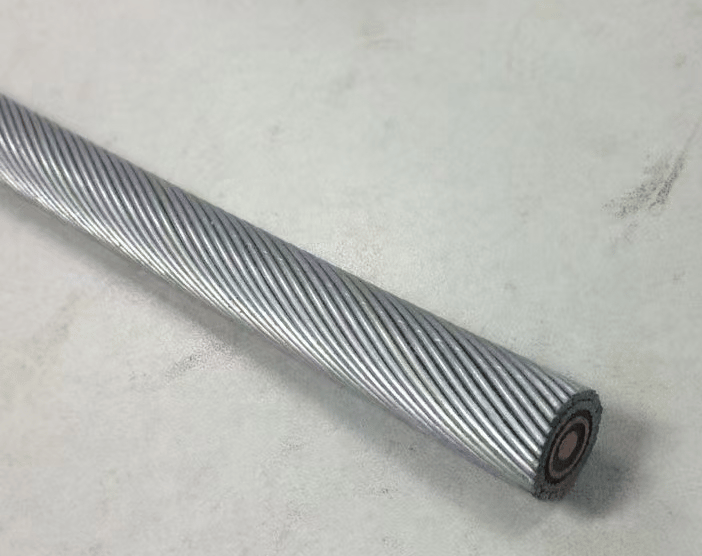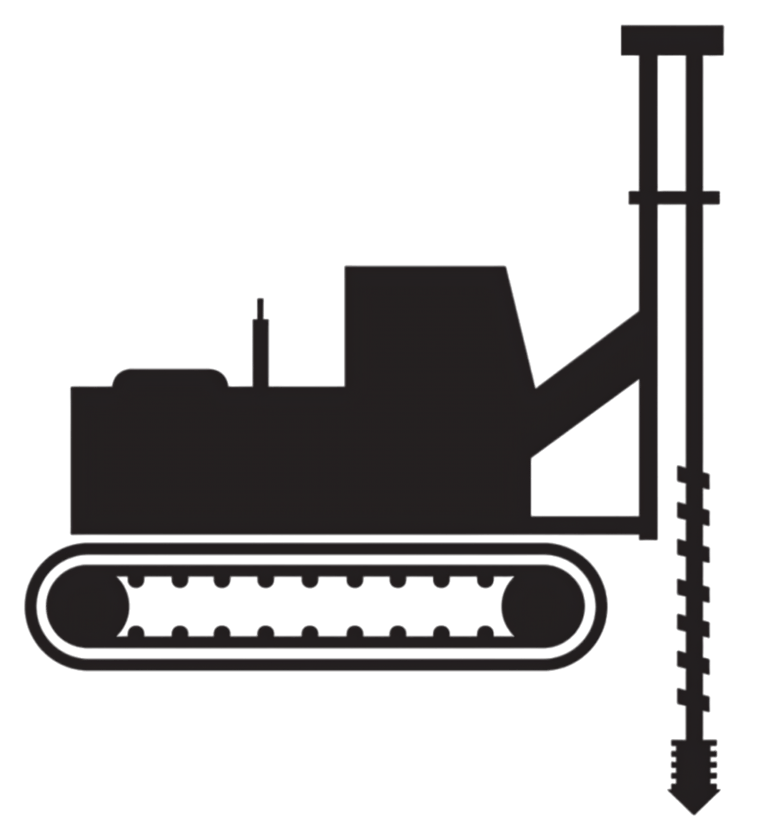Oil Load Detection Cable: Applications & Features Explained
Discover the versatile oil load detection cable for geological and marine use.
Oil Load Detection Cable: Applications & Features Explained
In the demanding world of resource exploration, the tools we use must be as resilient as the professionals who deploy them. Among these critical tools, oil load detection cables stand as unsung heroes in the quest to unlock Earth's hidden resources. These specialized cables serve as lifelines in some of the most challenging environments on our planet—from scorching deserts to frigid arctic regions, and deep beneath ocean floors.
Having spent over a decade in the field of industrial cabling solutions, I've witnessed firsthand how the right detection cable can make the difference between project success and costly failure. These aren't your standard electrical cables; they're precision-engineered marvels designed to withstand extreme conditions while delivering flawless performance where it matters most.
What Are Oil Load Detection Cables?
Oil load detection cables, also commonly referred to as well exploration cables, are specialized electrical and mechanical cable systems designed specifically for the demanding requirements of geological exploration, particularly in oil and gas industries. Unlike conventional cables, these robust solutions serve dual purposes: they provide reliable power supply to downhole equipment while simultaneously enabling critical signal transmission from sensors and detection instruments back to surface monitoring systems.
The uniqueness of these cables lies in their construction. They combine electrical conductors for power and signal transmission with high-tensile strength components that allow them to support substantial mechanical loads—often including the weight of attached exploration equipment itself. This dual electrical-mechanical functionality makes them indispensable in modern exploration operations.
What sets them apart from standard industrial cables is their ability to function reliably in extreme environments. From the crushing pressures of deep-sea operations to the corrosive conditions encountered in exploratory wells, these cables maintain integrity where conventional options would quickly fail.
Scope of Application
The versatility of oil load detection cables extends across multiple industries and applications. Their primary uses include:
Geological Exploration
In geological exploration, these cables serve as the primary connection between surface equipment and downhole tools. They enable:
Seismic surveying - Transmitting data from geophones and other seismic sensors that map subsurface formations
Core sampling operations - Powering drilling equipment while retrieving real-time data about formations being sampled
Well logging - Enabling comprehensive data collection about well conditions, including temperature, pressure, and formation characteristics
Directional drilling - Providing power and control signals to steerable drilling systems used in precision wellbore placement
The reliability of these cables is particularly crucial in remote exploration sites, where equipment failure can result in project delays costing tens of thousands of dollars per day.
Marine Observation Networks
The ocean remains one of Earth's least explored frontiers, and oil load detection cables play a vital role in marine observation systems:
Seafloor observatories - Powering permanent monitoring stations that collect oceanographic and geological data
Tsunami warning systems - Connecting pressure sensors and seismometers on the ocean floor to alert systems
Environmental monitoring - Supporting sensors that track ocean conditions, currents, and marine ecosystems
Research applications - Enabling long-term studies of deep-sea environments and geological processes
During a recent deep-sea monitoring project off the coast of Norway, our team deployed a custom detection cable system that's been continuously operating for three years in water depths exceeding 1,000 meters—a testament to the durability these specialized cables offer.
Oilfield Detection Equipment
Once production begins, these cables continue to serve critical functions:
Permanent downhole monitoring - Providing continuous data on well conditions and production parameters
Enhanced oil recovery operations - Supporting advanced techniques to maximize reservoir output
Well integrity monitoring - Detecting potential issues before they become catastrophic failures
Production optimization - Collecting data used to fine-tune extraction processes
The data transmitted through these cables often represents the difference between optimal production and costly inefficiencies. In one North Sea installation, data provided through these cables helped increase production efficiency by 18% through real-time adjustments—translating to millions in additional revenue.
Key Technical Characteristics
What makes oil load detection cables suitable for such demanding applications? Their technical specifications reveal a product engineered for extreme performance:
Temperature Tolerance
These cables demonstrate exceptional thermal performance, functioning reliably across an impressive temperature range of -50°C to +125°C. This specification isn't arbitrary—it's designed to accommodate:
Arctic exploration conditions where ambient temperatures plummet well below freezing
Deep wellbore environments where temperatures rise dramatically with depth
Seasonal variations in operating conditions
Thermal cycling that would cause conventional cables to deteriorate rapidly
The temperature range can be customized based on specific project requirements, with specialized formulations available for applications that exceed even these broad parameters. I recall one project in the Middle East where we developed a cable variant capable of withstanding sustained exposure to 150°C in a particularly hot reservoir environment—pushing the boundaries of material science.
Conductor Specifications
The electrical conductors within these cables are designed according to application-specific requirements, considering:
Voltage requirements - Ranging from low-voltage signal transmission to medium-voltage power delivery
Current capacity - Sized appropriately for connected equipment loads
Signal integrity - With appropriate shielding and insulation to prevent data corruption
Conductor material - Typically high-conductivity copper or copper alloys, sometimes with silver plating for specialized applications
The flexibility to customize conductor cross-sectional area ensures optimal electrical performance without unnecessarily increasing cable diameter or weight—critical factors in deep exploration applications where every millimeter and kilogram matters.
Mechanical Strength
Perhaps the most impressive characteristic of these cables is their mechanical performance. With breaking forces ranging from 10kN to 150kN (approximately 1 to 15 tons), these cables can:
Support the weight of attached exploration equipment
Withstand the tension applied during deployment and retrieval
Resist damage from lateral forces and vibration
Maintain integrity despite repeated spooling and unspooling operations
This strength comes from specialized reinforcement elements integrated into the cable design, typically including:
Aramid fiber strength members
Steel wire armoring
Specialized polymer reinforcement
Hybrid strength systems combining multiple technologies
The breaking force can be tailored to specific project requirements, with custom designs available for applications requiring exceptional strength characteristics.
Physical Dimensions
Despite their impressive mechanical and electrical capabilities, these cables maintain relatively compact dimensions, with outer diameters typically not exceeding 28.0mm. This size constraint is crucial for:
Compatibility with standard deployment equipment
Minimizing weight for transportation and handling
Enabling longer cable runs on standard spooling systems
Reducing drag in underwater applications
The engineering challenge lies in balancing all required functionality within this dimensional constraint—a feat that requires advanced materials and precise manufacturing processes.
Construction and Design Elements
The exceptional performance of oil load detection cables stems from their sophisticated construction. While designs vary based on specific applications, most incorporate the following key elements:
Core Components
At the heart of these cables lie their electrical conductors, typically arranged in one of several configurations:
1. Concentric arrangements - With a central conductor surrounded by additional conductors in layers
2. Twisted pair configurations - For improved signal integrity in data transmission
3. Coaxial structures - For high-frequency signal applications
4. Hybrid designs - Combining multiple conductor types within a single cable
These conductors are precision-manufactured from high-purity materials, often with specialized plating or treatments to enhance conductivity and corrosion resistance.
Insulation Systems
Surrounding the conductors are sophisticated insulation systems that must:
Provide reliable electrical isolation
Withstand extreme temperatures
Resist chemical degradation
Maintain flexibility throughout the cable's service life
Modern cables typically employ advanced polymer compounds, often proprietary formulations developed specifically for exploration applications. These may include modified polyethylene, fluoropolymers like ETFE or PTFE, or specialized elastomeric compounds.
Strength Members
The mechanical backbone of these cables consists of carefully engineered strength elements that may include:
Aramid fibers (such as Kevlar®) - Offering exceptional strength-to-weight ratios
Steel wire armoring - Providing maximum tensile strength and crush resistance
Fiberglass elements - Combining strength with electrical isolation properties
Carbon fiber components - In applications requiring the ultimate strength-to-weight ratio
These elements are integrated into the cable structure in ways that distribute mechanical loads while protecting the cable's electrical functionality.
Protective Jacketing
The outer layers of these cables provide critical protection against:
Abrasion from rock formations and equipment
Chemical exposure from drilling fluids and formation materials
Hydrostatic pressure in underwater applications
UV exposure during surface operations
Jacket materials are typically engineered thermoplastic or thermoset compounds, sometimes with additional treatments to enhance specific performance characteristics like flame resistance or low friction coefficients.
Advantages in Field Applications
The specialized design of oil load detection cables translates to significant operational advantages:
Extended Service Life
Despite the harsh conditions in which they operate, well-designed detection cables offer impressive longevity. This translates to:
Reduced replacement frequency and associated costs
Minimized operational interruptions for cable maintenance
Lower lifetime ownership costs despite higher initial investment
More consistent data collection over extended periods
I've seen properly specified cables remain in continuous service for 8+ years in offshore applications—a remarkable achievement considering the hostile operating environment.
Reliable Data Transmission
The integrity of data collected through these cables directly impacts exploration and production decisions. Superior cables ensure:
Minimal signal degradation over long distances
Resistance to electromagnetic interference
Consistent electrical characteristics despite environmental variations
Appropriate bandwidth for modern sensing technologies
This reliability is particularly crucial in applications where real-time decision-making relies on accurate sensor data—such as directional drilling operations where course corrections depend on immediate feedback.
Operational Safety
Beyond their technical performance, these cables contribute significantly to operational safety:
Reducing the risk of electrical failures in potentially hazardous environments
Minimizing the need for personnel to enter dangerous areas for maintenance
Providing reliable emergency shutdown capabilities when integrated with safety systems
Ensuring continuous monitoring of critical parameters that might indicate developing hazards
Customization Options
One of the most valuable aspects of modern oil load detection cables is their adaptability to specific project requirements. Manufacturers offer numerous customization options:
Application-Specific Designs
Cables can be engineered for particular operating environments:
Deepwater applications - With enhanced pressure resistance and marine-grade materials
High-temperature wells - Featuring specialized insulation systems rated for extreme heat
Arctic deployments - With jacketing that maintains flexibility at sub-zero temperatures
Highly corrosive environments - Incorporating exceptional chemical resistance
Signal Configuration Options
Depending on the instrumentation being supported, cables can incorporate various signal pathways:
Analog signal conductors - For traditional sensor systems
Digital data paths - Including options for fiber optic integration
High-frequency transmission lines - For advanced acoustic or electromagnetic sensing
Multiplexed configurations - Allowing multiple instrument signals on shared conductors
Mechanical Adaptations
The physical characteristics can be tailored to deployment methods and equipment:
Custom breaking strength - Matched precisely to anticipated mechanical loads
Specialized termination compatibility - Designed for specific connection systems
Optimized flexibility - Balanced against strength requirements
Custom diameter specifications - To match existing deployment equipment
Selection Considerations
Choosing the right oil load detection cable involves evaluating several critical factors:
Environmental Assessment
A comprehensive analysis of operating conditions should include:
Maximum and minimum temperature exposure
Pressure conditions (particularly in underwater applications)
Chemical exposure profile (drilling fluids, formation chemicals, etc.)
Mechanical stress factors (tension, bending, vibration)
Electrical Requirements
Electrical specifications must account for:
Power delivery needs (voltage, current, frequency)
Signal transmission requirements (analog, digital, bandwidth)
Electromagnetic compatibility considerations
Grounding and shielding requirements
Mechanical Demands
Physical performance parameters should address:
Maximum anticipated tensile loads
Minimum bend radius requirements
Abrasion resistance needs
Weight constraints for deployment systems
Operational Factors
Practical considerations include:
Deployment method and compatible dimensions
Expected service life and replacement strategy
Maintenance accessibility
Budget constraints balanced against performance requirements
Future Trends in Detection Cable Technology
The field continues to evolve, with several emerging trends shaping next-generation products:
Integrated Sensing Capabilities
Newer cable designs are beginning to incorporate distributed sensing technologies directly into the cable structure:
Distributed temperature sensing using fiber optic elements
Distributed acoustic sensing for enhanced seismic monitoring
Strain monitoring for structural health assessment
Distributed pressure sensing capabilities
These advancements transform the cable from a simple connection medium into an active sensing element along its entire length.
Enhanced Materials Science
Material innovations continue to push performance boundaries:
Graphene-enhanced polymers for improved thermal conductivity
Nanocomposite jacketing with superior abrasion resistance
Advanced metallurgy for conductor alloys with improved characteristics
Bioinspired structural designs that optimize strength-to-weight ratios
Digital Integration
Modern cables increasingly support advanced digital capabilities:
Higher bandwidth for real-time high-definition imaging
Compatibility with Internet of Things (IoT) sensor networks
Support for edge computing deployments at remote locations
Enhanced cybersecurity features for critical infrastructure protection
Conclusion
Oil load detection cables represent a perfect example of specialized engineering addressing unique industrial challenges. Their ability to provide reliable electrical connections while withstanding extreme mechanical and environmental stresses makes them indispensable in modern exploration and production operations.
As exploration targets become more challenging—deeper waters, more extreme temperatures, more remote locations—these cables will continue evolving to meet those demands. The ongoing collaboration between field operators and cable manufacturers drives continuous improvement, ensuring that tomorrow's exploration efforts have the reliable connections they need to succeed.
For professionals involved in geological exploration, marine observation, or oilfield operations, understanding the capabilities and limitations of these specialized cables isn't just technical knowledge—it's a critical factor in project success. The right cable, properly specified and deployed, can be the difference between reliable data and costly uncertainty in some of industry's most challenging applications.

Frequently Asked Questions (FAQ)
What is an Oil Leak Detection Cable and What is it Used For?
An oil leak detection cable (also called an oil-sensing cable) is a specialised sensor cable designed to detect hydrocarbon liquids (oils and fuels) along its entire length.
It contains a hydrocarbon-sensitive silicone element that changes its electrical properties when in contact with oil.
In practice, the cable is laid in areas at risk of oil spills – for example under fuel pipes, around storage tanks, or in engine rooms – and connected to a monitoring panel.
When oil touches the cable’s surface, it triggers an alarm at the control panel.
Key features:
Only reacts to oils and fuels, not water.
Provides continuous, real-time monitoring.
Helps prevent environmental contamination, fire risks, and equipment damage.
How Do Oil Leak Detection Cables Work?
Oil-sensing cables operate on a resistive principle:
Each cable has a silicone-based sensing jacket with conductive carbon particles.
When oil contacts the jacket, it swells, increasing the distance between carbon particles.
This raises the cable's electrical resistance, triggering the alarm.
Important:
The process is reversible.
After cleaning off the oil, the silicone contracts, and resistance returns to normal.
The cable can be reused after cleaning.
What are the Main Components of an Oil Detection Cable?
Typical oil detection cable structure includes:
Silicone sensing layer (absorbs oil).
Continuity (return) wire.
Digital communication (bus) wire.
Power and ground wires.
Protective polyethylene braid for mechanical strength.
Each cable segment also features plug-and-play connectors for easy installation.
What Liquids Can Oil Leak Detection Cables Detect?
Oil leak detection cables are designed to detect hydrocarbons, such as:
Gasoline
Diesel fuel
Jet fuel
Kerosene
Lubricating oils
Crude oil
They do not react to water or water-soluble fluids.
This ensures no false alarms from rain, condensation, or cleaning water.
Are Oil Leak Detection Cables Reusable, and How Are They Cleaned?
Yes, oil-sensing cables are reusable!
After a leak is detected and fixed:
Clean the cable using a compatible solvent (e.g., mineral spirit or mild detergent).
The silicone polymer returns to its original state.
Benefits of reusability:
Lower maintenance costs
Longer service life
Better sustainability for large installations
Why are Oil Leak Detection Cables Important in Industrial Applications?
Oil leaks pose serious risks:
Fire hazards
Environmental contamination
Equipment failure
Using oil leak detection cables offers:
Fast detection of small leaks.
Precise leak location.
Compliance with industrial safety and environmental regulations.
Reduced downtime and maintenance costs.
Industries like power generation, oil & gas, and manufacturing heavily rely on these systems to ensure safe operations.
Application Scenarios for Oil Leak Detection Cables
In Which Industries are Oil Leak Detection Cables Commonly Used?
Oil detection cables are widely used in:
Power generation plants (diesel & gas engine rooms)
Oil and gas pipelines and refineries
Airports and fuel depots
Marine and shipping industries (engine rooms)
Data centres (protecting diesel backup systems)
Manufacturing plants (hydraulic systems)
Wherever hydrocarbons are stored or moved, oil leak detection systems help protect assets and people.
How are Oil Detection Cables Used in Power Generation and Generator Rooms?
In generator rooms or engine bays:
Fuel lines, filters, and tanks are major leak points.
Oil leak detection cables are laid near low points, drip pans, and around tanks.
Upon detection, the system identifies the exact cable segment that sensed the leak.
Example:
In a hospital’s emergency generator room, cables are installed around the diesel tanks and under piping systems to catch leaks early and protect critical infrastructure.
Conclusion
Oil leak detection cables are a critical technology for industries managing hydrocarbons.
They provide fast, reliable, and reusable leak detection, helping to ensure environmental protection, operational safety, and regulatory compliance.
Using these systems can significantly reduce risks, downtime, and costs associated with oil spills.
If your facility handles oil or fuel, installing high-quality oil detection cables is a smart investment for safety and sustainability.




Oil Load Detection Cable: Applications & Features Explained
Discover the versatile oil load detection cable for geological and marine use. Learn about its capabilities and specifications here.
4/28/202511 min read


















